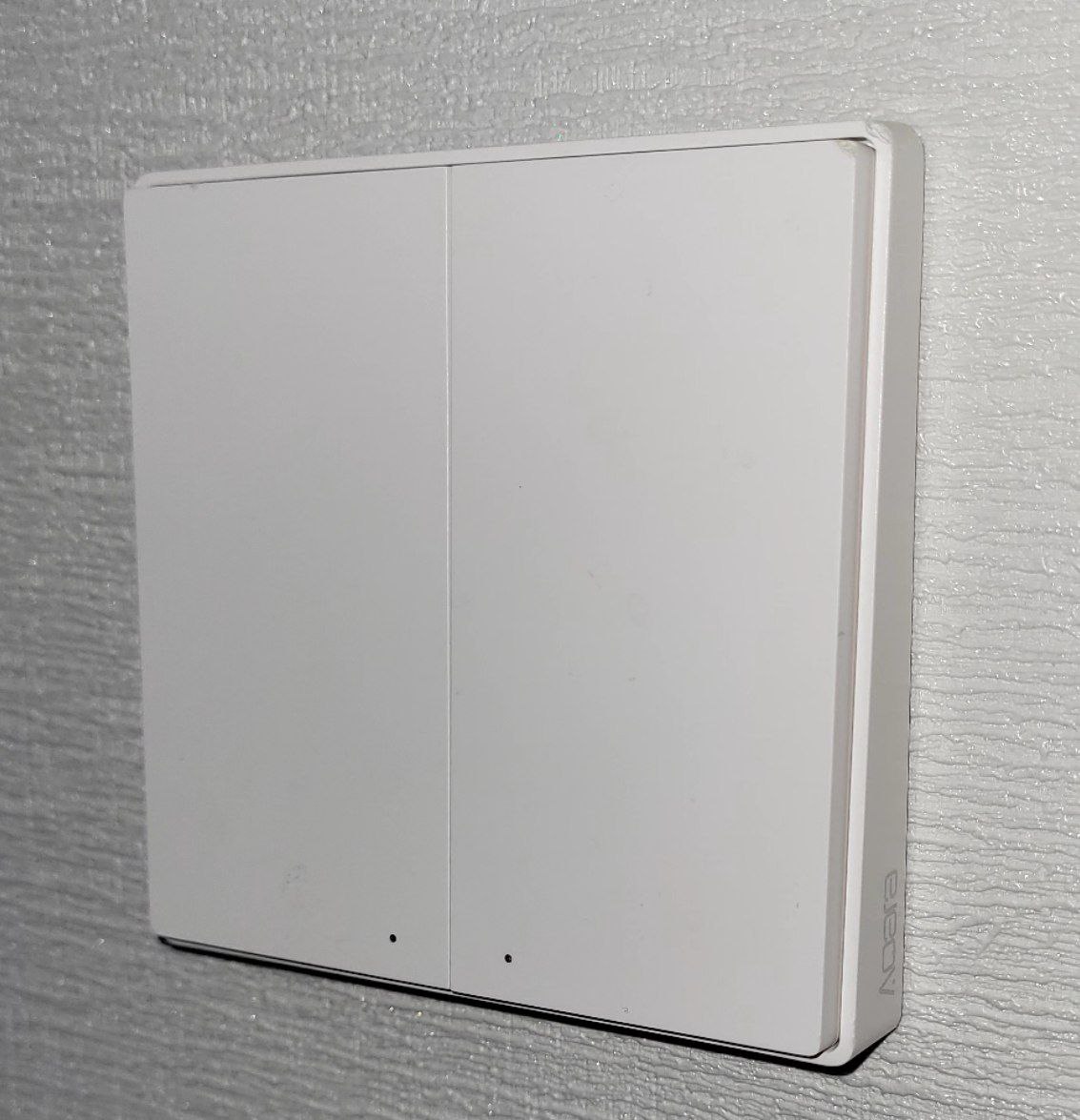
(not available)
Aqara Smart Wall Switch E1 Wireless 2-Key Switch
Aqara Smart Wall Switch E1 is a wireless 2-key switch that allows you to control your home electronics with ease. It is compatible with various home automation systems, including Amazon Alexa, Google Home, and Apple HomeKit. Its sleek design and compact size make it an ideal addition to any home decor.
(not available)
Aqara Two-way Control Module
Control your smart home devices with the Aqara Two-way Control Module. This wireless relay controller has 2 channels and works with the Xiaomi Home APP and Apple HomeKit.
(not available)
Aqara Smart Wall Switch E1 Wired (No Neutral), 2 Key, Model: QBKG39LM
Aqara Smart Wall Switch E1 Wired (No Neutral) is a versatile smart switch that can be used to control a wide range of devices, including lights, fans, and small appliances. With its built-in Zigbee 3.0 protocol, it is compatible with a variety of smart home systems, including Amazon Alexa, Google Assistant, and Apple HomeKit. This model features 2 keys and is designed for use in homes without a neutral wire.
(not available)

(not available)
 $4.00 - $99.43
$4.00 - $99.43from 7 sellers
Smart wall switches are usually installed to replace regular old wall switches, sometimes in addition to them.
The form factor of the switches is usually the same as a regular traditional switch, with Aqara and Xiaomi switches having a modern, attractive design:
Unlike conventional mechanical switches where pressing the top part turns the light on and pressing the bottom part turns it off, smart wall switches are a key where only the bottom part is pressed.
Smart switches come in wired and wireless. A wired wall switch is connected to wires instead of a traditional switch, and buying such a switch only makes sense to replace an old, mechanical switch. Wireless switches, outwardly exactly the same as the wired after their installation, are attached to any surface with the help of the supplied double-sided tape, and powered by a battery, usually CR2032.
In turn, wired switches are divided into those that require a neutral wire and those that do not.
Let's compare the switches using the Aqara Smart Wall Switch E1 as an example.
Here is
wireless smart 2-keys wall switchwireless smart 2-keys wall switch. With only two keys, this switch, however, can become a real remote control with many functions. In the Mi Home app you can set up the following events: single, double, long press on a key (left, right), simultaneous pressing of 2 keys. It turns out that you can customize as many as 7 different events with this switch.
The disadvantages of the wireless switch include the need to replace the battery (but this will have to be done every 2-3 years, or even less often), and the need to purchase an additional relay,
such as thissuch as this to control a traditional luminaire.
Wired wall switch with two keys without neutral wireWired wall switch with two keys without neutral wire will be a convenient replacement for your old mechanical switch in most cases. All you need to do is plug it in instead of the old switch, and it's ready to go. Of course, for its smart features to become available, you'll need to add it to your Mi Home app by connecting it to a Zigbee 3.0-capable wireless control unit.
Disadvantages of such a switch: you can't place it wherever you want, you need a recess in the wall and power wires. All that will be able to do such a switch - to turn on and off the lamp to which it is connected (although in the application and there is an opportunity to change its mode of operation). And the main problem is connecting it to a low-power LED light fixture, or a dimmable light fixture. After all, the switch is connected in series with the luminaire. And if through the light fixture flows insufficient current (dimmed, or it is turned off with its own remote control), then the switch will stop working normally, until you again increase the brightness.
It could look like this: you turned down the brightness and the light stopped turning off via Mi Home. After a while, you turn the brightness up, the switch works again, and.... turned off the lights. Not very convenient, is it?
You can solve this problem by connecting an additional load in parallel with the lamp, or by using such a
switch with neutral wireswitch with neutral wire. But there's another problem with it: if you're replacing a regular old switch, you'll probably only have access to the "phase" wires, and you'll have to figure out how to get that neutral wire to the switch.
If you choose fully wireless smart switch, then it makes sense to take a look on
such wireless smart buttonsuch wireless smart button, operating via bluetooth:

In that case you can leave the old traditional switch as is and use it as additional way to turn the light (with normally "ON" mode), and place such button (or buttons) in convenient place. Such button has smaller size than wall switch, and this gives more flexibility in question where to place it. And it is very useful what it has very small move on pressing (like computer mouse buttons). This button has 3 events in Mi Home app: short press, long press and double press. You can simply set turn on/off ceil lamps on short press, or use more complex scenarios. For example, in our kitchen light turns on by
this motion sensorthis motion sensor, turns off if there is no motion for very long time, but also by short click on this button, placed under hand on door. Additionally, long press on this button turns on bright lignt in the kitchen.
To choose between different types of smart switches, you can visit
this page.
If you want to ask or add something, please leave comment below, we appreciate your feedback!











